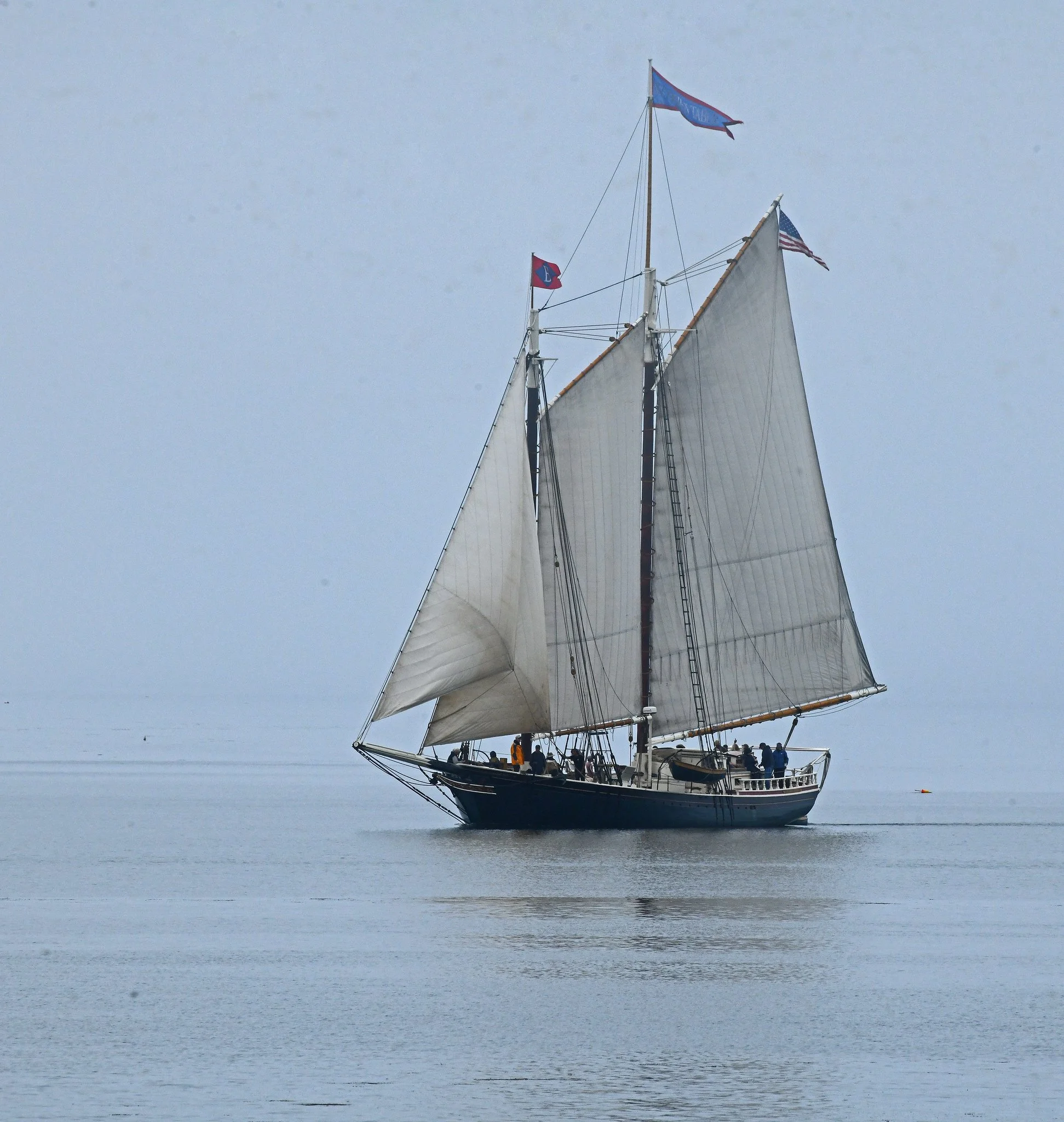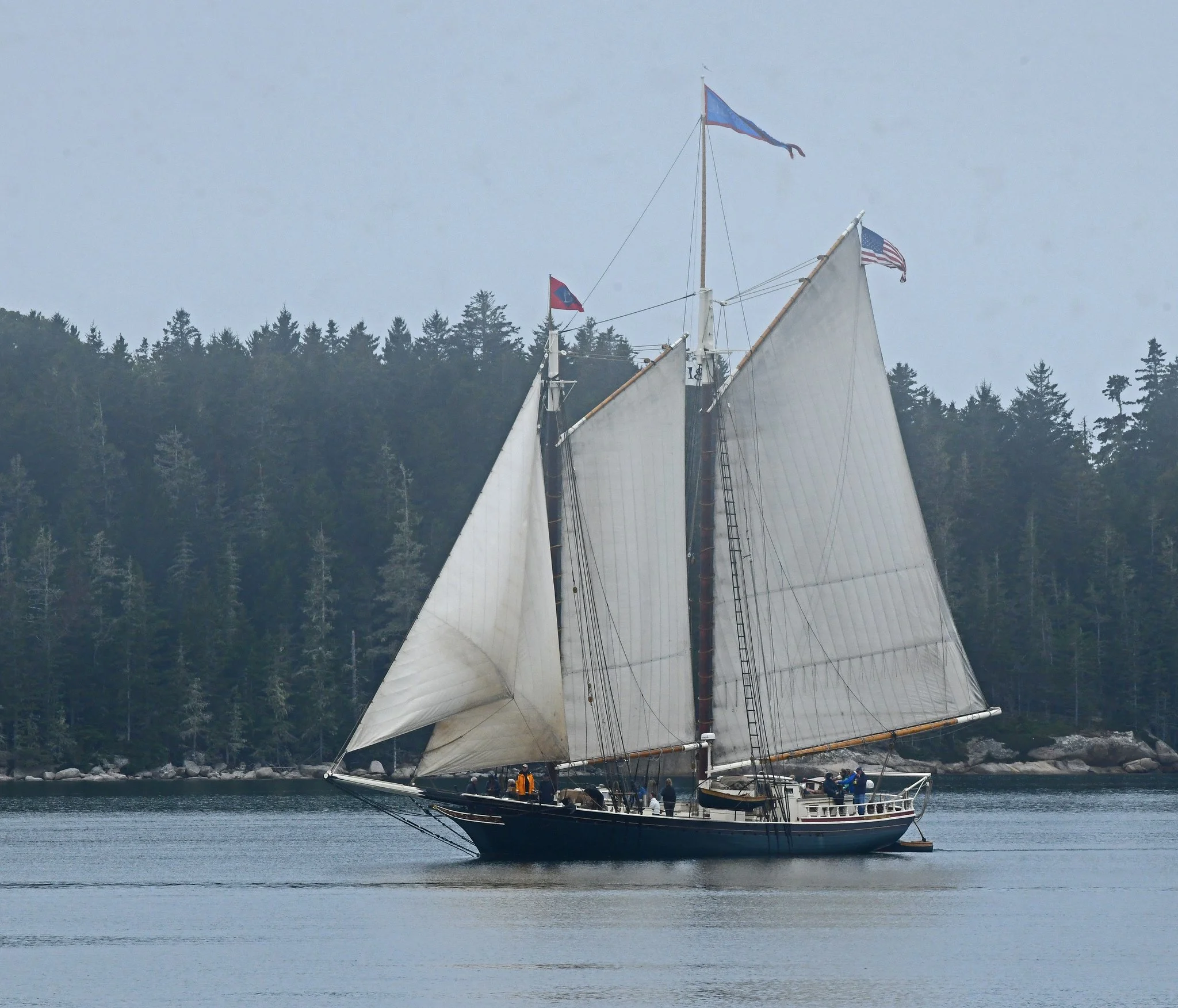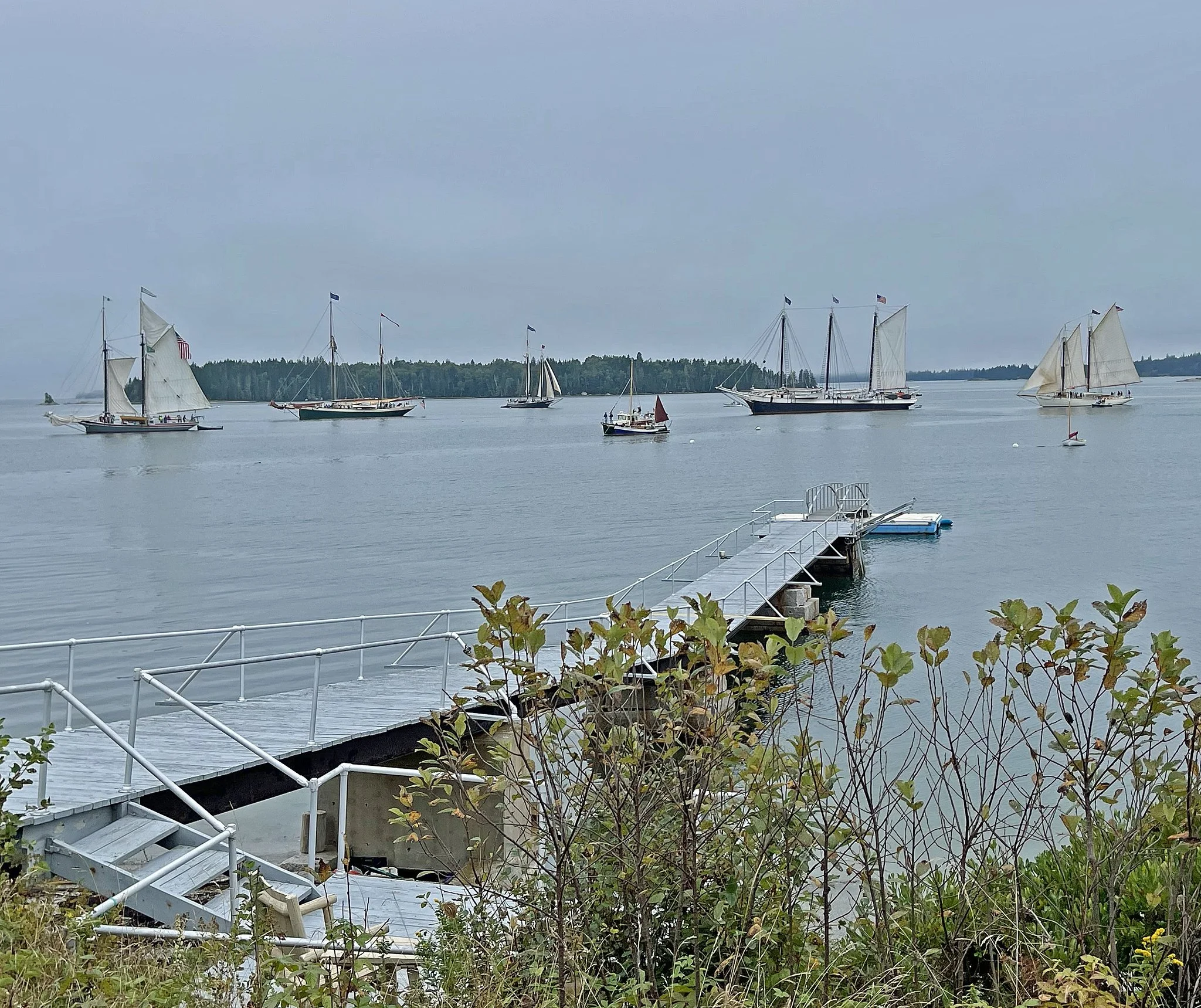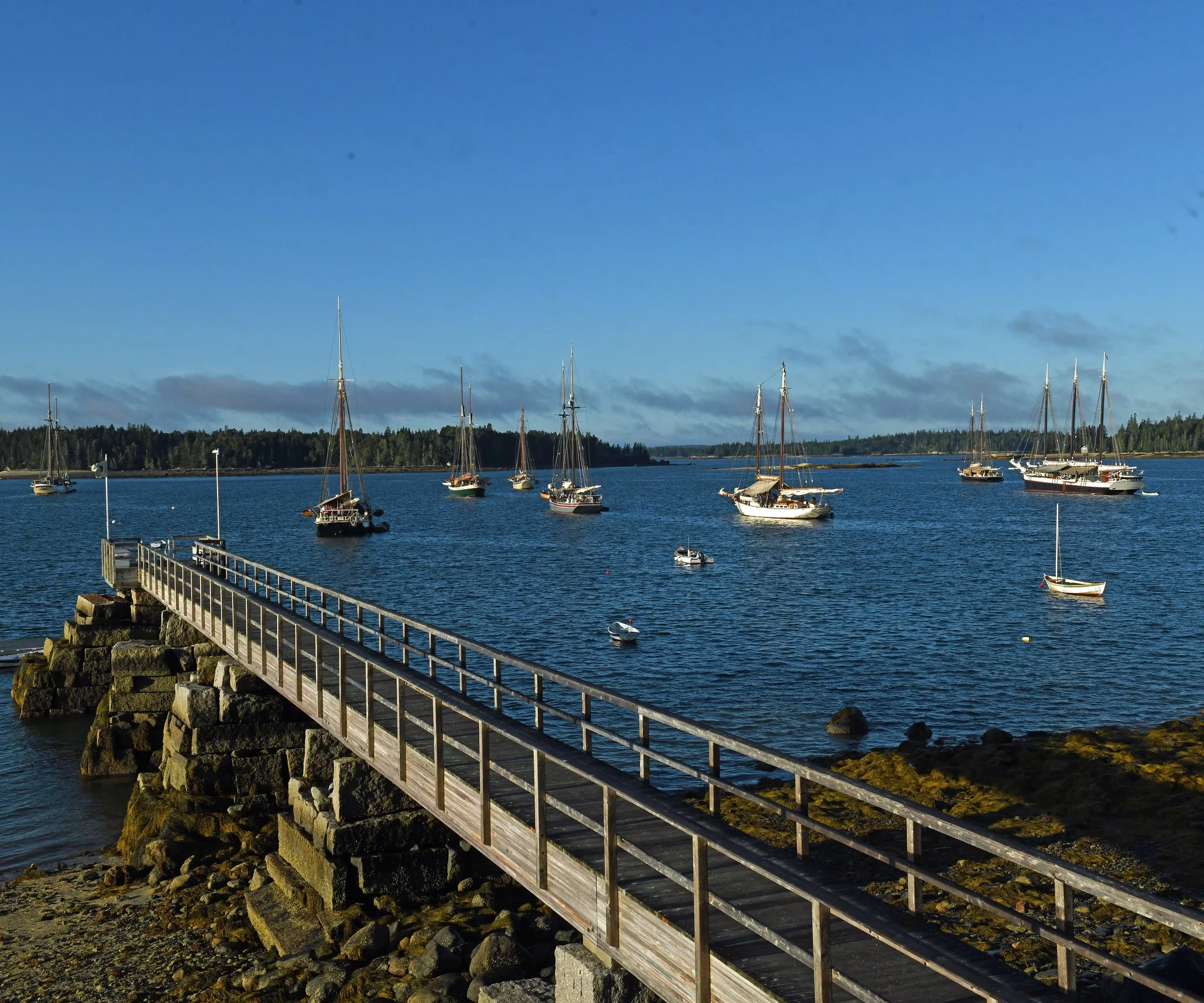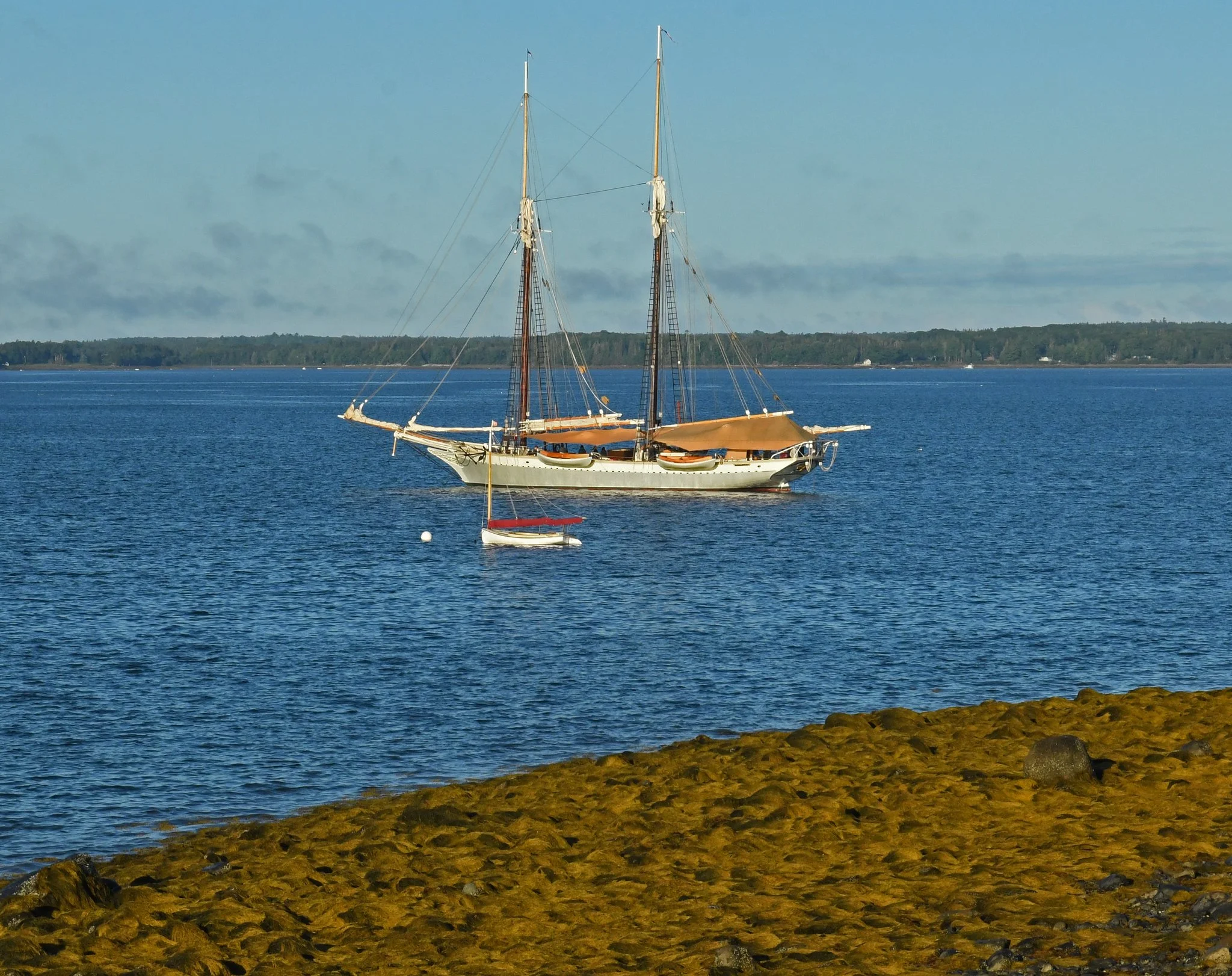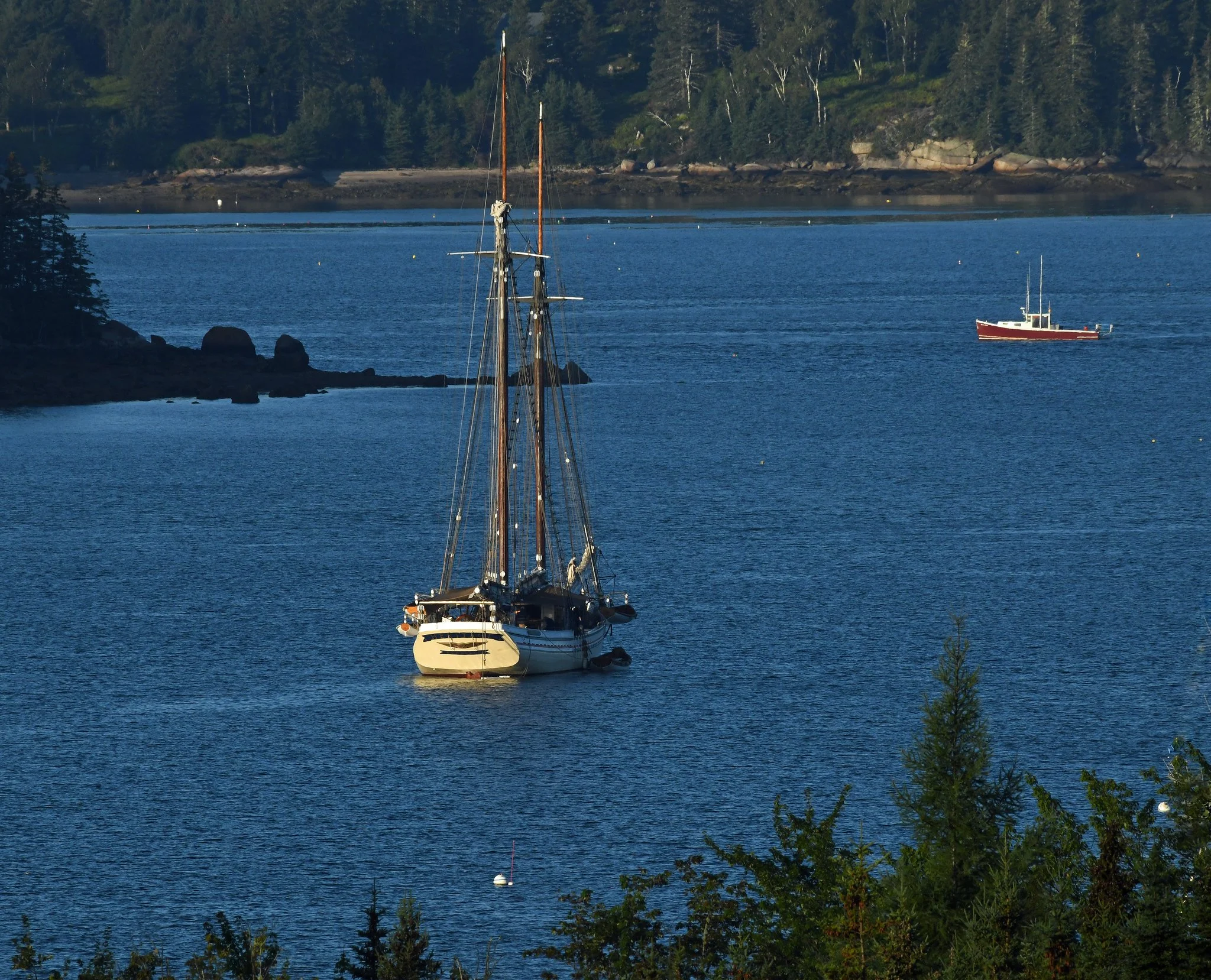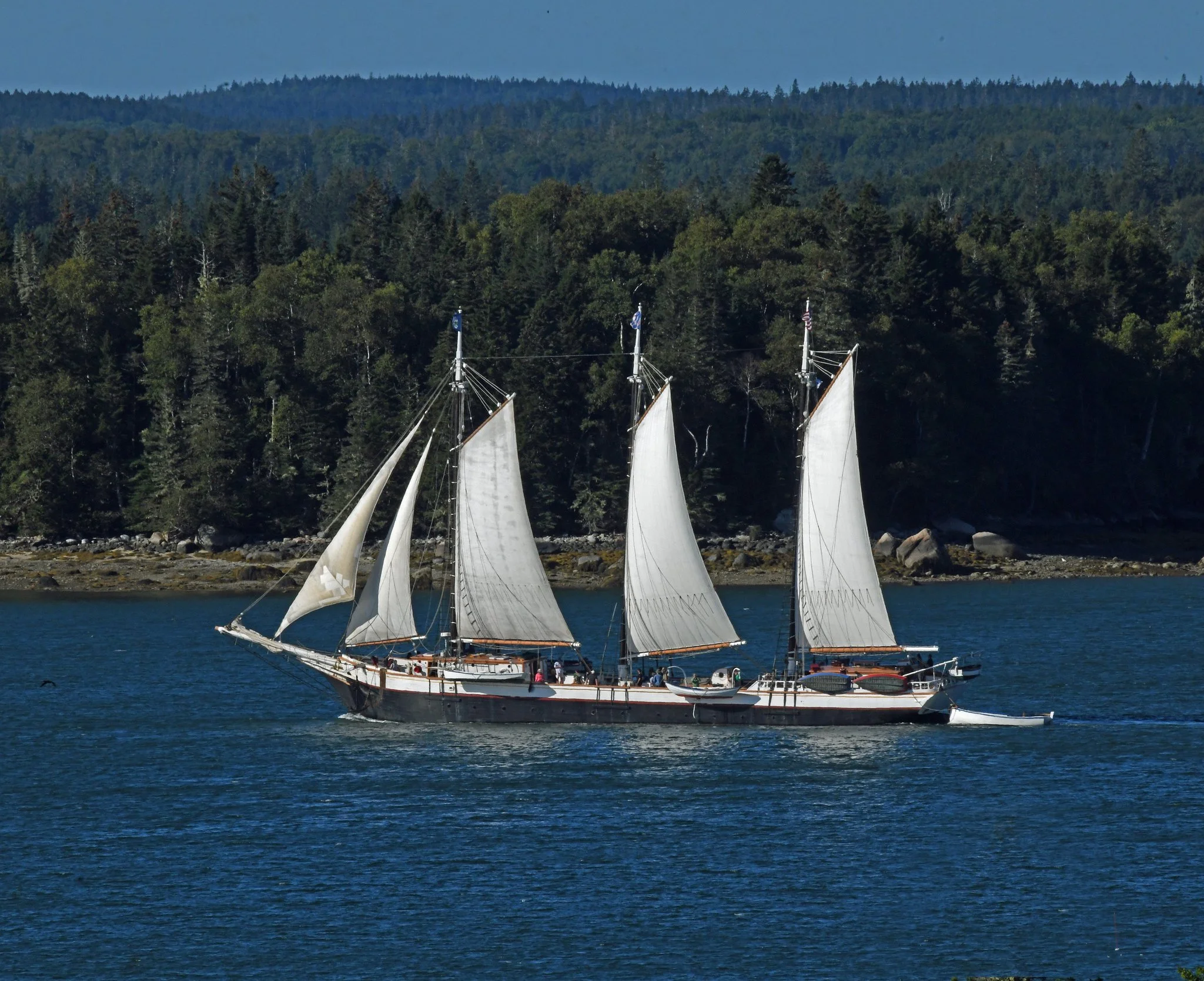It’s the beginning of the end of “the season,” the summer sailing season in Down East Maine. It’s a poignant time watching sailboats being pulled reluctantly from their beautiful element and seeing them suffer the indignities of being power-washed and pulled by an ungainly tractor over a dusty road.
Soon, they’ll be sentenced to months in a shadowy boat shed or – even worse – wrapped in plastic like wintering insects.
Yes, summer and its joys are disappearing fast. But, football has arrived and we’ll soon have autumn’s colors to help us forget about what it’s like to harmonize with wind and water. (Images taken at the WoodenBoat School in Brooklin, Maine, on September 14 and 15, 2022.)















